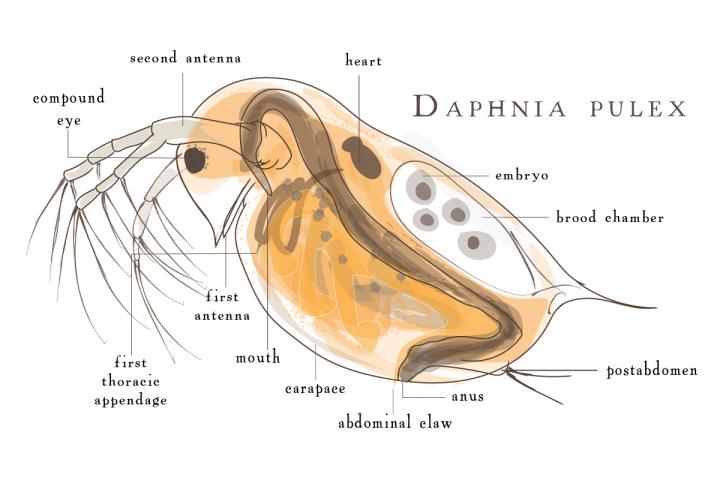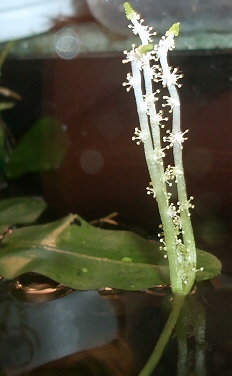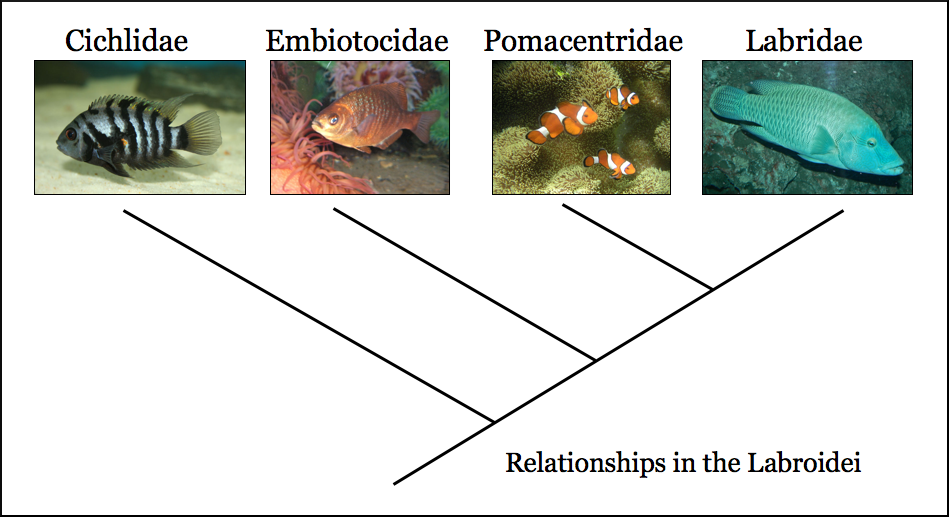|
Eyespot Rasbora
The eyespot rasbora (''Brevibora dorsiocellata'') is a small fish belonging to the Family Cyprinidae, subfamily Danioninae, which is known by the common names of ocellated rasbora, hi-spot rasbora, and eye-spot rasbora, an allusion to the marking situated upon the dorsal fin. This small fish is a popular aquarium fish, having been one of the species featured in the landmark textbook ''Exotic Aquarium Fishes'' by Dr William T. Innes (page 180.1 - see References below). Its appearance in this work only occurs in later editions of the book, however, therefore the species is not subject to the same degree of aquarium domestication as the more familiar harlequin rasbora. Distribution It is a native of Malaysia and Sumatra . It is an inhabitant of streams and other waterbodies with an acidic pH, at least some of these being situated in habitats classified as peat swamp forests (more details covered in the Habitat section below). or they found in National water resources Description ... [...More Info...] [...Related Items...] OR: [Wikipedia] [Google] [Baidu] |
Paul Georg Egmont Duncker
Paul Georg Egmont Duncker (6 May 1870, Hamburg – 28 July 1953, Ahrensburg) was a German ichthyologist. Biography He studied at the universities of Kiel, Freiburg, and Berlin, receiving his doctorate at Kiel in 1895. Following graduation he lived and worked in Karlsruhe, Plymouth, Naples, Cold Spring Harbour (Long Island N.Y.), and Würzburg. From 1901 he worked as a curator for a year at the Selangor State Museum in Kuala Lumpur, afterwards returning to Europe, where he spent another year in Naples.Duncker, (Paul) Georg (Egmont) Nationaal Herbarium Nederland He was a member of the Hamburg ''Südsee-Expedition'' (1908-10) during its first year in , of which, he collected specimens ... [...More Info...] [...Related Items...] OR: [Wikipedia] [Google] [Baidu] |
Characin
Characiformes is an order of ray-finned fish, comprising the characins and their allies. Grouped in 18 recognized families, more than 2000 different species are described, including the well-known piranha and tetras.; Buckup P.A.: "Relationships of the Characidiinae and phylogeny of characiform fishes (Teleostei: Ostariophysi)", ''Phylogeny and Classification of Neotropical Fishes'', L.R. Malabarba, R.E. Reis, R.P. Vari, Z.M. Lucena, eds. (Porto Alegre: Edipucr) 1998:123-144. Taxonomy The Characiformes form part of a series called the Otophysi within the superorder Ostariophysi. The Otophysi contain three other orders, Cypriniformes, Siluriformes, and Gymnotiformes. The Characiformes form a group known as the Characiphysi with the Siluriformes and Gymnotiformes. The order Characiformes is the sister group to the orders Siluriformes and Gymnotiformes, though this has been debated in light of recent molecular evidence. Originally, the characins were all grouped within a sing ... [...More Info...] [...Related Items...] OR: [Wikipedia] [Google] [Baidu] |
Daphnia
''Daphnia'' is a genus of small planktonic crustaceans, in length. ''Daphnia'' are members of the order Anomopoda, and are one of the several small aquatic crustaceans commonly called water fleas because their saltatory swimming style resembles the movements of fleas. ''Daphnia'' spp. live in various aquatic environments ranging from acidic swamps to freshwater lakes and ponds. The two most commonly found species of ''Daphnia'' are '' D. pulex'' (small and most common) and '' D. magna'' (large). They are often associated with a related genus in the order Cladocera: '' Moina'', which is in the Moinidae family instead of the Daphniidae, and is much smaller than ''D. pulex'' (roughly half the maximum length). Appearance and characteristics The body of a ''Daphnia'' species is usually long, and is divided into segments, although this division is not visible. The head is fused, and is generally bent down towards the body with a visible notch separating the ... [...More Info...] [...Related Items...] OR: [Wikipedia] [Google] [Baidu] |
Chironomidae
The Chironomidae (informally known as chironomids, nonbiting midges, or lake flies) comprise a family of nematoceran flies with a global distribution. They are closely related to the Ceratopogonidae, Simuliidae, and Thaumaleidae. Many species superficially resemble mosquitoes, but they lack the wing scales and elongated mouthparts of the Culicidae. The name Chironomidae stems from the Ancient Greek word ''kheironómos'', "a pantomimist". Common names and biodiversity This is a large taxon of insects; some estimates of the species numbers suggest well over 10,000 world-wide. Males are easily recognized by their plumose antennae. Adults are known by a variety of vague and inconsistent common names, largely by confusion with other insects. For example, chironomids are known as "lake flies" in parts of Canada and Lake Winnebago, Wisconsin, but "bay flies" in the areas near the bay of Green Bay, Wisconsin. They are called "sand flies", "muckleheads", "muffleheads", "Canadian ... [...More Info...] [...Related Items...] OR: [Wikipedia] [Google] [Baidu] |
Myriophyllum
''Myriophyllum'' (water milfoil) is a genus of about 69 species of freshwater aquatic plants, with a cosmopolitan distribution. The center of diversity for ''Myriophyllum'' is Australia with 43 recognized species (37 endemic). These submersed aquatic plants are perhaps most commonly recognized for having elongate stems with air canals and whorled leaves that are finely, pinnately divided, but there are many exceptions. For example, the North American species ''M''. ''tenellum'' has alternately arranged scale like leaves, while many Australian species have small alternate or opposite leaves that lack dissection. The plants are usually heterophyllous, leaves above the water are often stiffer and smaller than the submerged leaves on the same plant and can lack dissection. Species can be monoecious or dioecious. In monoecious species plants are hermaphrodite, in dioecious species plants are either male or female, the flowers are small, 4(2)-parted and usually borne in emergent ... [...More Info...] [...Related Items...] OR: [Wikipedia] [Google] [Baidu] |
Cryptocoryne
''Cryptocoryne'' is a genus of aquatic plants from the family Araceae. The genus is naturally distributed in tropical regions of India, Southeast Asia and New Guinea. The typical habitats of ''Cryptocoryne'' are mostly streams and rivers with not too rapidly flowing water, in the lowland forest. They also live in seasonally inundated forest pools or on river banks submerged only at high water. Although the proper scientific name of the genus is ''Cryptocoryne'', they are commonly referred to as crypts. The English name "water trumpet" refers to their inflorescence, a spadix enclosed by a spathe (typical for the whole family), which resembles a trumpet. The first ''Cryptocoryne'' species was described in 1779 as ''Arum spirale'' by Retzius. The genus was described by Friedrich Ernst Ludwig von Fischer in 1828. However, the scientific classification of ''Cryptocoryne'' species is very complicated and there are different opinions about it. '' Lagenandra'' is another genus closely ... [...More Info...] [...Related Items...] OR: [Wikipedia] [Google] [Baidu] |
Aponogeton
The Aponogetonaceae (the Cape-pondweed family or aponogeton family) are a family of flowering plants in the order Alismatales. In recent decades the family has had universal recognition by taxonomists. The APG system (1998) and APG II system (2003) treat it in the order Alismatales in the clade monocots. The family consists of only one genus, ''Aponogeton'', with 56 known species (Christenhusz & Byng 2016 ) of aquatic plants, most of which have been included in a molecular phylogeny by Chen et al. (2015). The name was published in ''Supplementum Plantarum'' 32: 214 (1782) and is derived from a geographic location neighboring (''geton'') the Apono tribal district of coastal Gabon. Some species are used as ornamental plants in aquariums. Distribution They are aquatic plants, which are found in tropical to warm temperate regions of Africa, Asia and Australasia.Watson, L. & Dallwitz, M. J. (1992 onwards)Aponogetonaceae ''Aponogeton distachyos'' is originally from South Africa ... [...More Info...] [...Related Items...] OR: [Wikipedia] [Google] [Baidu] |
Labyrinth Fish
The Anabantoidei are a suborder of anabantiform ray-finned freshwater fish distinguished by their possession of a lung-like labyrinth organ, which enables them to breathe air. The fish in the Anabantoidei suborder are known as anabantoids or labyrinth fish, or colloquially as gouramies. Some labyrinth fish are important food fish, and many others, such as the Siamese fighting fish and paradise fish, are popular as aquarium fish. Labyrinth organ The labyrinth organ, a defining characteristic of fish in the suborder Anabantoidei, is a much-folded supra branchial accessory breathing organ. It is formed by vascularized expansion of the epibranchial bone of the first gill arch and used for respiration in air.Pinter, H. (1986). Labyrinth Fish. Barron's Educational Series, Inc., This organ allows labyrinth fish to take in oxygen directly from the air, instead of taking it from the water in which they reside through use of gills. The labyrinth organ helps the inhaled oxygen to be a ... [...More Info...] [...Related Items...] OR: [Wikipedia] [Google] [Baidu] |
Laetacara
''Laetacara'' is a small genus of cichlids native to freshwater habitats in tropical and subtropical South America, ranging from the upper Orinoco River basin in Venezuela to the Paraná River basin Argentina.Linke H, Staeck L (1994) ''American cichlids I: Dwarf Cichlids. A handbook for their identification, care and breeding.'' Tetra Press. Germany. The genus is also collectively known as the smiling acaras. Like all cichlids, ''Laetacara'' species have well-developed brood care. All members of the genus are monogamous, open spawning cichlids. They are popular in the fishkeeping hobby and are frequently kept in aquariums. ''Laetacara'' are relatively small cichlids, growing to about in length depending on exact species, and are part of the group known to aquarists as dwarf cichlids. Species There are currently seven recognized species in this genus: * '' Laetacara araguaiae'' Ottoni & W. J. E. M. Costa, 2009 * '' Laetacara curviceps'' ( C. G. E. Ahl, 1923) (Flag acara) * ... [...More Info...] [...Related Items...] OR: [Wikipedia] [Google] [Baidu] |
Cichlid
Cichlids are fish from the family Cichlidae in the order Cichliformes. Cichlids were traditionally classed in a suborder, the Labroidei, along with the wrasses ( Labridae), in the order Perciformes, but molecular studies have contradicted this grouping. The closest living relative of cichlids is probably the convict blenny, and both families are classified in the 5th edition of ''Fishes of the World'' as the two families in the Cichliformes, part of the subseries Ovalentaria. This family is both large and diverse. At least 1,650 species have been scientifically described, making it one of the largest vertebrate families. New species are discovered annually, and many species remain undescribed. The actual number of species is therefore unknown, with estimates varying between 2,000 and 3,000. Many cichlids, particularly tilapia, are important food fishes, while others, such as the '' Cichla'' species, are valued game fish. The family also includes many popular freshwater ... [...More Info...] [...Related Items...] OR: [Wikipedia] [Google] [Baidu] |
Dwarf Cichlid
Dwarf cichlid is a term used by fishkeeping hobbyists to describe an arbitrary assemblage of small-sized fish from the family Cichlidae. Although the grouping is widely used in the aquarium industry and hobby, the grouping has no taxonomic or ecological basis and is poorly defined.Linke H, Staeck L (1994) ''American cichlids I: Dwarf Cichlids. A handbook for their identification, care and breeding.'' Tetra Press. Germany. Though dwarf cichlids are by definition small-sized cichlids, there is no accepted maximum length of a dwarf-sized cichlid. Some authors suggest a maximum of 10 centimetres (3.9 in.), while other suggest a maximum length of 12 centimetres (4.7 in.).Richter H-J (1989) ''Complete Book of Dwarf Cichlids.'' Tropical Fish Hobbyist, USA The term is most frequently used to describe small South American or West African species which are suitable for soft, acidic ( pH 4 to 7) densely planted aquariums, however, some aquarists and authors include within this "dwarf cichl ... [...More Info...] [...Related Items...] OR: [Wikipedia] [Google] [Baidu] |
Otocinclus
''Otocinclus'' is a genus of catfish in the family Loricariidae native to South America, commonly known as "dwarf suckers" or "otos". This genus, like other loricariids, is characterized by rows of armour plating covering the body, as well as the underslung suckermouth. They are generally small in size; ''O. tapirape'' is the smallest of the species (2.4 cm), while ''O. flexilis'' is the biggest (5.5 cm). These species have adaptations that allow them to breathe air. A duct forms at the junction between the esophagus and the stomach and expands into an enlarged, ring-like diverticulum, characteristic of this genus, which allows air-breathing.Armbruster, J.W. (1998)Modifications of the Digestive Tract for Holding Air in Loricariid and Scoloplacid Catfishes.''Copeia, 1998 (3): 663–675.'' ''Otocinclus'' are popular aquarium fish, and they are often purchased as algae eaters. It is difficult to breed them in captivity, and only wild caught ''Otocinclus'' are available to ... [...More Info...] [...Related Items...] OR: [Wikipedia] [Google] [Baidu] |






.jpg)